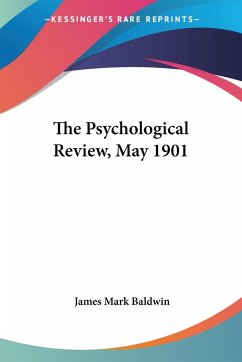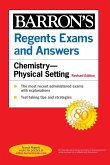- Broschiertes Buch
- Merkliste
- Auf die Merkliste
- Bewerten Bewerten
- Teilen
- Produkt teilen
- Produkterinnerung
- Produkterinnerung
With a streamlined presentation of content and greater coverage devoted to current references and research, the fifth edition of Psychological Dynamics of Physical Activity simplifies complex psychology topics and helps students explore practical theory as they prepare for their professional lives.
Andere Kunden interessierten sich auch für
![The Psychological Review The Psychological Review]() Eleanor RowlandThe Psychological Review31,99 €
Eleanor RowlandThe Psychological Review31,99 €![The Psychological Review, July 1901 The Psychological Review, July 1901]() James Mark BaldwinThe Psychological Review, July 190115,99 €
James Mark BaldwinThe Psychological Review, July 190115,99 €![The Psychological Review, May 1901 The Psychological Review, May 1901]() James Mark BaldwinThe Psychological Review, May 190114,99 €
James Mark BaldwinThe Psychological Review, May 190114,99 €![Regents Exams and Answers: Chemistry--Physical Setting Revised Edition Regents Exams and Answers: Chemistry--Physical Setting Revised Edition]() Albert TarendashRegents Exams and Answers: Chemistry--Physical Setting Revised Edition15,99 €
Albert TarendashRegents Exams and Answers: Chemistry--Physical Setting Revised Edition15,99 €![An Essay for the Construction of Roads On Mechanical and Physical Principles An Essay for the Construction of Roads On Mechanical and Physical Principles]() AnonymousAn Essay for the Construction of Roads On Mechanical and Physical Principles15,99 €
AnonymousAn Essay for the Construction of Roads On Mechanical and Physical Principles15,99 €![Pathology for the Physical Therapist Assistant Pathology for the Physical Therapist Assistant]() Penelope J LescherPathology for the Physical Therapist Assistant89,99 €
Penelope J LescherPathology for the Physical Therapist Assistant89,99 €![Physical Education Physical Education]() Physical Education18,99 €
Physical Education18,99 €-
-
-
With a streamlined presentation of content and greater coverage devoted to current references and research, the fifth edition of Psychological Dynamics of Physical Activity simplifies complex psychology topics and helps students explore practical theory as they prepare for their professional lives.
Produktdetails
- Produktdetails
- Verlag: Human Kinetics Publishers
- Fifth Edition
- Seitenzahl: 352
- Erscheinungstermin: 20. November 2025
- Englisch
- Abmessung: 279mm x 216mm
- ISBN-13: 9781718227101
- ISBN-10: 1718227108
- Artikelnr.: 73784674
- Herstellerkennzeichnung
- Libri GmbH
- Europaallee 1
- 36244 Bad Hersfeld
- gpsr@libri.de
- Verlag: Human Kinetics Publishers
- Fifth Edition
- Seitenzahl: 352
- Erscheinungstermin: 20. November 2025
- Englisch
- Abmessung: 279mm x 216mm
- ISBN-13: 9781718227101
- ISBN-10: 1718227108
- Artikelnr.: 73784674
- Herstellerkennzeichnung
- Libri GmbH
- Europaallee 1
- 36244 Bad Hersfeld
- gpsr@libri.de
Diane L. Gill, PhD, is a professor in the department of kinesiology at the University of North Carolina at Greensboro (UNCG). She held faculty positions at the University of Waterloo and the University of Iowa before moving to UNCG. At UNCG, she has served as associate dean of the School of Health and Human Performance and head of the department of kinesiology; from 2010 to 2015 she was the Linda Arnold Carlisle Distinguished Excellence Professor of Women's and Gender Studies. She has more than 40 years of experience as a faculty member in kinesiology and specifically in sport and exercise psychology. Gill has been engaged in research and scholarly activity in sport and exercise psychology throughout her career. She has more than 100 scholarly publications on sport and exercise psychology topics and has given many presentations at major national and international conferences. She serves on several editorial boards and is the former editor in chief of Journal of Sport and Exercise Psychology. She is a fellow of several professional organizations, including the American Psychological Association (APA), the American College of Sports Medicine, and the National Academy of Kinesiology. She is a former president of the North American Society for the Psychology of Sport and Physical Activity (NASPSPA) and of Division 47 (Exercise and Sport Psychology) of the APA. In 2014, Gill received the NASPSPA Distinguished Scholar award; in 2015, she received the Distinguished Contributions to Science and Research award from APA Division 47. She received both her MS and PhD degrees from the University of Illinois and her undergraduate degree from the State University of New York at Cortland. Erin J. Reifsteck, PhD, is a tenured associate professor at the University of North Carolina at Greensboro (UNCG), where she serves as the director of the online sport and exercise psychology master's program and as the faculty fellow for student veteran well-being. Reifsteck's current research focuses on promoting physical activity and health through sport, military, and life transitions, with an emphasis on translating theory into practice. Reifsteck served as principal investigator for two NCAA-funded studies to develop and evaluate the Moving On! program, which is based on a theoretical framework that integrates sport and exercise psychology principles to help student-athletes transition to a healthy lifestyle. In recognition of her work, Dr. Reifsteck received the Association for Applied Sport Psychology (AASP) Dorothy V. Harris Memorial Award in 2019. She is a fellow of AASP and serves on the editorial board for Women in Sport and Physical Activity Journal. Reifsteck received her PhD and MS in kinesiology (sport and exercise psychology concentration) with a doctoral minor in educational research methodology from UNCG. She also received a graduate certificate in women's and gender studies from UNCG and a health coach certificate through UNCG's department of public health education. She earned her BS in psychology with a minor in neuroscience from Saint Francis University (Pennsylvania), where she played field hockey and was a two-time Academic All-American and was named Northeast Conference Scholar-Athlete of the Year. DeAnne Davis Brooks, EdD, is a clinical associate professor and director of the applied science in kinesiology doctoral program at Old Dominion University. She was previously an associate professor and director of graduate programs in kinesiology at the University of North Carolina at Greensboro (UNCG). Davis Brooks' scholarship focuses on equity in higher education and athletics. She has written book chapters and articles centering the experiences of Black female athletes, student veterans, and students of color in the field of kinesiology. She has also delivered workshops to student-athletes, coaches, and athletics administrators on the topic of transitioning from competitive athletics to lifelong physical activity. Along with Erin Reifsteck, she codeveloped the Moving On! program to help athletes make healthy transitions to life after sports. Davis Brooks received her EdD in kinesiology from UNCG along with a graduate certificate in women's and gender studies. She earned an MEd in clinical exercise physiology from the University of Georgia and a BA in exercise and sport science from the University of North Carolina at Chapel Hill, where she was a four-time All-American in the triple jump, was Atlantic Coast Conference MVP, and was named Southeast Regional Athlete of the Year for track and field. Davis Brooks is a certified exercise physiologist, strength and conditioning coach, and yoga instructor and has coached track and field at the youth and collegiate levels for over 20 years.
Part I. Overview of Sport and Exercise Psychology
Chapter 1. Introduction to Sport and Exercise Psychology
Kinesiology: A Multidisciplinary, Applied Field
Sport and Exercise Psychology as a Subdiscipline
Complexity of Sport and Exercise Behavior
Chapter 2. History of Sport and Exercise Psychology
Early Roots: 1890 to 1920
Early Sport Psychology Labs: 1920 to 1940
Isolated Sport and Exercise Psychology Studies: 1940 to 1965
Emergence of Sport and Exercise Psychology as a Subdiscipline: 1965 to 1975
Development of the Subdiscipline and Applied Practice: 1975 to 1999
Sport and Exercise Psychology Today: 2000 to Present
Chapter 3. Understanding and Using Sport and Exercise Psychology
Understanding Sport and Exercise Psychology
Paradigms and Sources of Knowledge
Research Into Practice
Using Sport and Exercise Psychology
Part II. The Person in Sport and Exercise Psychology
Chapter 4. Personality
Personality Defined
Biological Perspectives
Psychology Models of Personality
Personality Research in Sport and Exercise Psychology
Sport-Specific Personality Characteristics and Psychological Skills
Chapter 5. Attention and Cognitive Skills
Attention Models and Perspectives
Research on Attentional Processes
Attention and Expert Performance
Attentional Control Strategies
Imagery
Chapter 6. Self-Perceptions
Self-Perceptions Terminology
Multidimensional Self-Perceptions
Physical Self-Concept
Identity
Possible Selves
Self-Confidence and Self-Efficacy
Mindsets
Part III. Motivation
Chapter 7. Behavioral Approaches to Motivation
Goals and Goal Setting
Behavioral Basics
Basic Principles: Reinforcement and Punishment
Implementing an Action Plan: The A-B-C Model
Behavioral Approaches in Professional Practice
Self-Regulation and Habits
Chapter 8. Social Cognitive Approaches to Motivation
Theories of Reasoned Action and Planned Behavior
Social Cognitive Theory
Self-Determination Theory
Motivational Climate
Chapter 9. Integrated Approaches to Physical Activity Behavior
Physical Activity for Health and Well-Being
Participation Motivation
Integrated Approaches to Physical Activity Promotion
Excessive Participation: Exercise Dependence
Part IV. Emotions, Stress, and Coping
Chapter 10. Emotions and Performance
Emotion Concepts and Definitions
Positive and Negative Emotions—Accent on Positive
Emotion Models
Emotions and Performance
Anxiety–Performance Models and Research
Multidimensional Anxiety–Performance Models
Anxiety Patterns and Performance
Chapter 11. Physical Activity, Emotion, and Mental Health
Physical Activity and Emotion
Physical Activity and Cognition
Physical Activity and Mental Health
Physical Activity for Positive Mental Health and Quality of Life
Chapter 12. Stress and Stress Management
Importance of Stress Management
Stress Models in Sport and Exercise Psychology
Stress Management Techniques
Part V. Social Processes
Chapter 13. Social Development in Sport and Physical Activity
Moral Behavior in Sport and Physical Activity
Positive Social Development Through Physical Activity
Socializing Agents
Social Development Across the Life Span
Sport and Social Missions
Chapter 14. Group Dynamics and Social Support
Group Dynamics Concepts
Group Performance
Leadership in Sport and Physical Activity
Cohesion in Sport and Exercise Groups
Applying Group Dynamics Through Team Building
Social Support in Sport and Exercise Contexts
Chapter 15. Cultural Diversity, Cultural Competence, and Social Justice
Culture: Basics and a Guiding Framework
Cultural Context of Sport and Exercise
Gender Issues in Sport and Physical Activity
Race and Ethnicity
Physical Characteristics and Weight Bias
Cultural Competence and Social Justice
Chapter 1. Introduction to Sport and Exercise Psychology
Kinesiology: A Multidisciplinary, Applied Field
Sport and Exercise Psychology as a Subdiscipline
Complexity of Sport and Exercise Behavior
Chapter 2. History of Sport and Exercise Psychology
Early Roots: 1890 to 1920
Early Sport Psychology Labs: 1920 to 1940
Isolated Sport and Exercise Psychology Studies: 1940 to 1965
Emergence of Sport and Exercise Psychology as a Subdiscipline: 1965 to 1975
Development of the Subdiscipline and Applied Practice: 1975 to 1999
Sport and Exercise Psychology Today: 2000 to Present
Chapter 3. Understanding and Using Sport and Exercise Psychology
Understanding Sport and Exercise Psychology
Paradigms and Sources of Knowledge
Research Into Practice
Using Sport and Exercise Psychology
Part II. The Person in Sport and Exercise Psychology
Chapter 4. Personality
Personality Defined
Biological Perspectives
Psychology Models of Personality
Personality Research in Sport and Exercise Psychology
Sport-Specific Personality Characteristics and Psychological Skills
Chapter 5. Attention and Cognitive Skills
Attention Models and Perspectives
Research on Attentional Processes
Attention and Expert Performance
Attentional Control Strategies
Imagery
Chapter 6. Self-Perceptions
Self-Perceptions Terminology
Multidimensional Self-Perceptions
Physical Self-Concept
Identity
Possible Selves
Self-Confidence and Self-Efficacy
Mindsets
Part III. Motivation
Chapter 7. Behavioral Approaches to Motivation
Goals and Goal Setting
Behavioral Basics
Basic Principles: Reinforcement and Punishment
Implementing an Action Plan: The A-B-C Model
Behavioral Approaches in Professional Practice
Self-Regulation and Habits
Chapter 8. Social Cognitive Approaches to Motivation
Theories of Reasoned Action and Planned Behavior
Social Cognitive Theory
Self-Determination Theory
Motivational Climate
Chapter 9. Integrated Approaches to Physical Activity Behavior
Physical Activity for Health and Well-Being
Participation Motivation
Integrated Approaches to Physical Activity Promotion
Excessive Participation: Exercise Dependence
Part IV. Emotions, Stress, and Coping
Chapter 10. Emotions and Performance
Emotion Concepts and Definitions
Positive and Negative Emotions—Accent on Positive
Emotion Models
Emotions and Performance
Anxiety–Performance Models and Research
Multidimensional Anxiety–Performance Models
Anxiety Patterns and Performance
Chapter 11. Physical Activity, Emotion, and Mental Health
Physical Activity and Emotion
Physical Activity and Cognition
Physical Activity and Mental Health
Physical Activity for Positive Mental Health and Quality of Life
Chapter 12. Stress and Stress Management
Importance of Stress Management
Stress Models in Sport and Exercise Psychology
Stress Management Techniques
Part V. Social Processes
Chapter 13. Social Development in Sport and Physical Activity
Moral Behavior in Sport and Physical Activity
Positive Social Development Through Physical Activity
Socializing Agents
Social Development Across the Life Span
Sport and Social Missions
Chapter 14. Group Dynamics and Social Support
Group Dynamics Concepts
Group Performance
Leadership in Sport and Physical Activity
Cohesion in Sport and Exercise Groups
Applying Group Dynamics Through Team Building
Social Support in Sport and Exercise Contexts
Chapter 15. Cultural Diversity, Cultural Competence, and Social Justice
Culture: Basics and a Guiding Framework
Cultural Context of Sport and Exercise
Gender Issues in Sport and Physical Activity
Race and Ethnicity
Physical Characteristics and Weight Bias
Cultural Competence and Social Justice
Part I. Overview of Sport and Exercise Psychology
Chapter 1. Introduction to Sport and Exercise Psychology
Kinesiology: A Multidisciplinary, Applied Field
Sport and Exercise Psychology as a Subdiscipline
Complexity of Sport and Exercise Behavior
Chapter 2. History of Sport and Exercise Psychology
Early Roots: 1890 to 1920
Early Sport Psychology Labs: 1920 to 1940
Isolated Sport and Exercise Psychology Studies: 1940 to 1965
Emergence of Sport and Exercise Psychology as a Subdiscipline: 1965 to 1975
Development of the Subdiscipline and Applied Practice: 1975 to 1999
Sport and Exercise Psychology Today: 2000 to Present
Chapter 3. Understanding and Using Sport and Exercise Psychology
Understanding Sport and Exercise Psychology
Paradigms and Sources of Knowledge
Research Into Practice
Using Sport and Exercise Psychology
Part II. The Person in Sport and Exercise Psychology
Chapter 4. Personality
Personality Defined
Biological Perspectives
Psychology Models of Personality
Personality Research in Sport and Exercise Psychology
Sport-Specific Personality Characteristics and Psychological Skills
Chapter 5. Attention and Cognitive Skills
Attention Models and Perspectives
Research on Attentional Processes
Attention and Expert Performance
Attentional Control Strategies
Imagery
Chapter 6. Self-Perceptions
Self-Perceptions Terminology
Multidimensional Self-Perceptions
Physical Self-Concept
Identity
Possible Selves
Self-Confidence and Self-Efficacy
Mindsets
Part III. Motivation
Chapter 7. Behavioral Approaches to Motivation
Goals and Goal Setting
Behavioral Basics
Basic Principles: Reinforcement and Punishment
Implementing an Action Plan: The A-B-C Model
Behavioral Approaches in Professional Practice
Self-Regulation and Habits
Chapter 8. Social Cognitive Approaches to Motivation
Theories of Reasoned Action and Planned Behavior
Social Cognitive Theory
Self-Determination Theory
Motivational Climate
Chapter 9. Integrated Approaches to Physical Activity Behavior
Physical Activity for Health and Well-Being
Participation Motivation
Integrated Approaches to Physical Activity Promotion
Excessive Participation: Exercise Dependence
Part IV. Emotions, Stress, and Coping
Chapter 10. Emotions and Performance
Emotion Concepts and Definitions
Positive and Negative Emotions—Accent on Positive
Emotion Models
Emotions and Performance
Anxiety–Performance Models and Research
Multidimensional Anxiety–Performance Models
Anxiety Patterns and Performance
Chapter 11. Physical Activity, Emotion, and Mental Health
Physical Activity and Emotion
Physical Activity and Cognition
Physical Activity and Mental Health
Physical Activity for Positive Mental Health and Quality of Life
Chapter 12. Stress and Stress Management
Importance of Stress Management
Stress Models in Sport and Exercise Psychology
Stress Management Techniques
Part V. Social Processes
Chapter 13. Social Development in Sport and Physical Activity
Moral Behavior in Sport and Physical Activity
Positive Social Development Through Physical Activity
Socializing Agents
Social Development Across the Life Span
Sport and Social Missions
Chapter 14. Group Dynamics and Social Support
Group Dynamics Concepts
Group Performance
Leadership in Sport and Physical Activity
Cohesion in Sport and Exercise Groups
Applying Group Dynamics Through Team Building
Social Support in Sport and Exercise Contexts
Chapter 15. Cultural Diversity, Cultural Competence, and Social Justice
Culture: Basics and a Guiding Framework
Cultural Context of Sport and Exercise
Gender Issues in Sport and Physical Activity
Race and Ethnicity
Physical Characteristics and Weight Bias
Cultural Competence and Social Justice
Chapter 1. Introduction to Sport and Exercise Psychology
Kinesiology: A Multidisciplinary, Applied Field
Sport and Exercise Psychology as a Subdiscipline
Complexity of Sport and Exercise Behavior
Chapter 2. History of Sport and Exercise Psychology
Early Roots: 1890 to 1920
Early Sport Psychology Labs: 1920 to 1940
Isolated Sport and Exercise Psychology Studies: 1940 to 1965
Emergence of Sport and Exercise Psychology as a Subdiscipline: 1965 to 1975
Development of the Subdiscipline and Applied Practice: 1975 to 1999
Sport and Exercise Psychology Today: 2000 to Present
Chapter 3. Understanding and Using Sport and Exercise Psychology
Understanding Sport and Exercise Psychology
Paradigms and Sources of Knowledge
Research Into Practice
Using Sport and Exercise Psychology
Part II. The Person in Sport and Exercise Psychology
Chapter 4. Personality
Personality Defined
Biological Perspectives
Psychology Models of Personality
Personality Research in Sport and Exercise Psychology
Sport-Specific Personality Characteristics and Psychological Skills
Chapter 5. Attention and Cognitive Skills
Attention Models and Perspectives
Research on Attentional Processes
Attention and Expert Performance
Attentional Control Strategies
Imagery
Chapter 6. Self-Perceptions
Self-Perceptions Terminology
Multidimensional Self-Perceptions
Physical Self-Concept
Identity
Possible Selves
Self-Confidence and Self-Efficacy
Mindsets
Part III. Motivation
Chapter 7. Behavioral Approaches to Motivation
Goals and Goal Setting
Behavioral Basics
Basic Principles: Reinforcement and Punishment
Implementing an Action Plan: The A-B-C Model
Behavioral Approaches in Professional Practice
Self-Regulation and Habits
Chapter 8. Social Cognitive Approaches to Motivation
Theories of Reasoned Action and Planned Behavior
Social Cognitive Theory
Self-Determination Theory
Motivational Climate
Chapter 9. Integrated Approaches to Physical Activity Behavior
Physical Activity for Health and Well-Being
Participation Motivation
Integrated Approaches to Physical Activity Promotion
Excessive Participation: Exercise Dependence
Part IV. Emotions, Stress, and Coping
Chapter 10. Emotions and Performance
Emotion Concepts and Definitions
Positive and Negative Emotions—Accent on Positive
Emotion Models
Emotions and Performance
Anxiety–Performance Models and Research
Multidimensional Anxiety–Performance Models
Anxiety Patterns and Performance
Chapter 11. Physical Activity, Emotion, and Mental Health
Physical Activity and Emotion
Physical Activity and Cognition
Physical Activity and Mental Health
Physical Activity for Positive Mental Health and Quality of Life
Chapter 12. Stress and Stress Management
Importance of Stress Management
Stress Models in Sport and Exercise Psychology
Stress Management Techniques
Part V. Social Processes
Chapter 13. Social Development in Sport and Physical Activity
Moral Behavior in Sport and Physical Activity
Positive Social Development Through Physical Activity
Socializing Agents
Social Development Across the Life Span
Sport and Social Missions
Chapter 14. Group Dynamics and Social Support
Group Dynamics Concepts
Group Performance
Leadership in Sport and Physical Activity
Cohesion in Sport and Exercise Groups
Applying Group Dynamics Through Team Building
Social Support in Sport and Exercise Contexts
Chapter 15. Cultural Diversity, Cultural Competence, and Social Justice
Culture: Basics and a Guiding Framework
Cultural Context of Sport and Exercise
Gender Issues in Sport and Physical Activity
Race and Ethnicity
Physical Characteristics and Weight Bias
Cultural Competence and Social Justice








